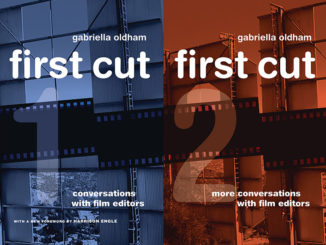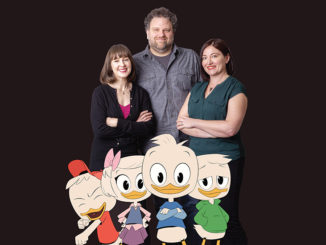
by David Bruskin
Unless you’re a fan of Sunset Boulevard or know about Lillian Hellman’s early days in Hollywood, you probably don’t know what a story analyst is. We’re the envy of folks who like the idea of getting paid to read. We “cover” mostly screenplays, but also novels (some pre-publication), newspaper and magazine articles, plays — any potential source for a good story or lead character. We evaluate old movies for their potential as contemporary remakes, and foreign movies as possible American remakes. We work on development projects.
We’re envied less for having to read and finish something dull or awful, writing a synopsis (which is the most tedious part of being a story analyst), and composing thoughtful comments on strengths, weaknesses and feature film potential. The work product is called coverage. A story analyst is usually the first (and sometimes only) person to read a submission cover to cover. An analyst’s thumbs-down usually ends further consideration, so to the outside world, we seem powerful. (I always get a good laugh at that.)
Growing up in Philadelphia, I fell in love with movies when I was five and first saw Charlie Chaplin. (I’d watched The Three Stooges for years, but that was on TV, so I didn’t think of that as movies.) The first movie I made (wrote, directed and starred in) was a fourth grade social studies project called Adventures in Paraguay; I “played” Charlie Chaplin. A couple years later, I read The Total Filmmaker by one of my childhood favorites, Jerry Lewis. When I learned he was a professor at the USC School of Cinema, I set my heart and sights on that film school and eventually acquired a few degrees.
Having written screenplays, I was giving material the benefit of the doubt; but my job was to evaluate material, not suggest fixes. I was to compare what I read to an imaginary screenplay paradigm of what the studio would want.
I didn’t set out to become a story analyst. (What I really wanted to do was direct. I know — shocker.) Most of us stumble into it, or if we’re in the union, luck into it. Story analysis first appeared on my radar in graduate school. Perusing the course guide for something to fill out my unit requirements that semester, I thought a story analysis class sounded interesting and might help with writing my Master’s thesis screenplay. The coverage I wrote for this class helped me procure my first gig at a one-hit wonder production company.
How I got into the union is practically a cliché; I knew the right person at the right place at the right time. For an independent study project in grad school, I had become acquainted with the story editor at Warner Bros. Months later, I had been doing soul-killing temp work to pay the bills when the story editor called me out of the blue. The “available list” of IATSE readers looking for work was exhausted, so the story editor was allowed to hire off roster. She didn’t know how long the job would last, but said it would be more than the 30 days required to get on the union roster. (Roster? What’s that? Benefits?) Years later, I realized that a special door had opened for a brief moment and I’d been whisked inside — for which I am forever grateful.
The prerequisite for a story analyst is to know how to write. Many analysts were college English majors. I wasn’t, but luckily for me, my mother had been. Over years of her proofing my school papers and explaining each correction, I learned to write. And if you can write, you can think. An analyst learns most of what he needs to know in the first few months on the job. I calibrated my critical sensibilities, which meant, frankly, I had to stop championing too much of what I read. Having written screenplays, I was giving material the benefit of the doubt; but my job was to evaluate material, not suggest fixes. I was to compare what I read to an imaginary screenplay paradigm of what the studio would want — which is something else one learns on the job: “What the studio wants” is both broad and imprecise. Like obscenity, we know it when we see it.
After the Warner’s gig ended, I landed at Columbia Pictures. Over time, several analysts moved to other studios, and higher priority submissions came my way. My big break occurred when my coverage on a certain project apparently articulated a problem that had been troubling the head of the studio (who had started out as a story analyst!). He praised my coverage at the Monday morning meeting, and after that, I became the flavor of the month. It was good to be the King — or even a favored jester.
It’s been nearly 23 years since I joined the union. I’ve had the privilege of contributing to the development of movies good and bad, famous and forgettable. It helps that when I’m reading something that’s a chore, I know it will be over soon and the next good piece of material, like love, could be just around the corner.





